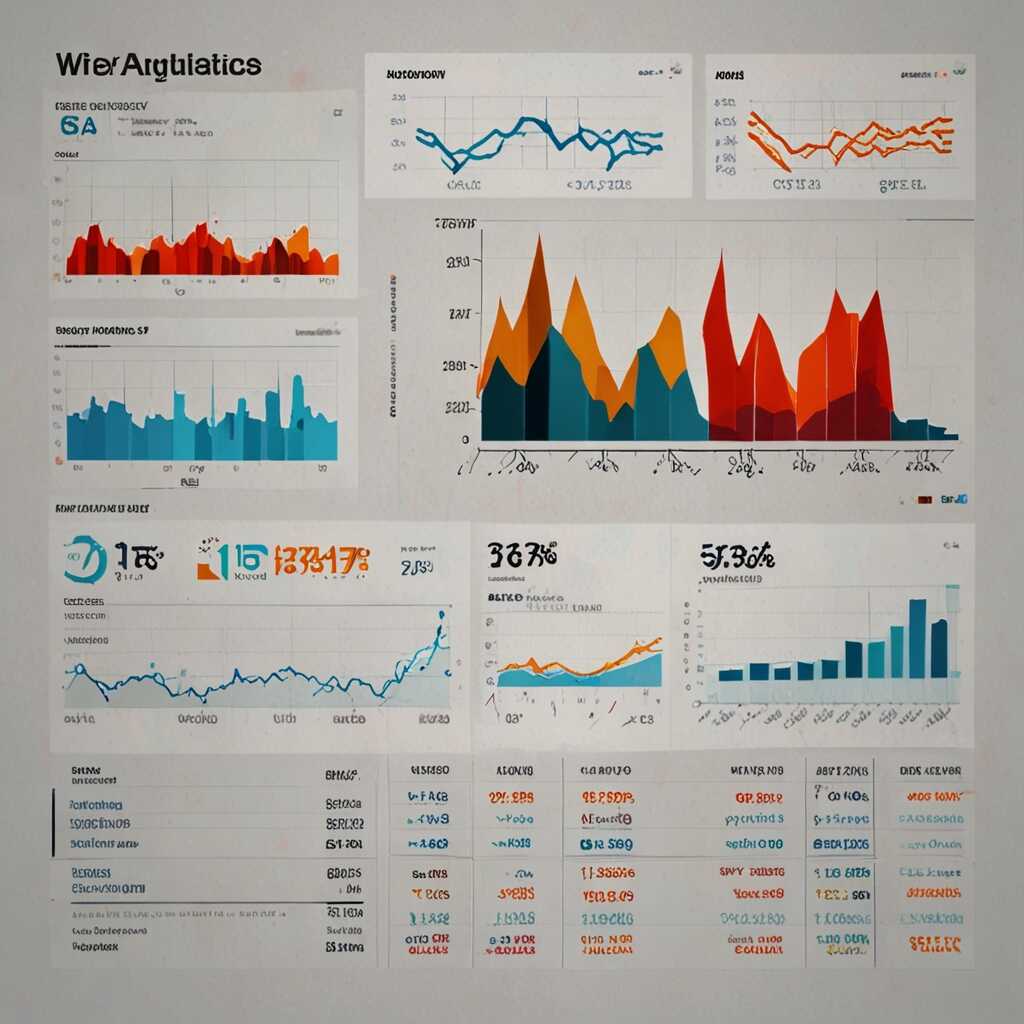Slow website speed can drastically affect user experience and search engine rankings, making it crucial to address this issue. Many website owners wonder what causes their site to lag and how to improve its performance effectively. At Metrics Rule, we specialize in technical SEO and understand common pitfalls that lead to slow loading times, providing you with solutions to enhance your site’s speed and overall functionality.
Understanding the Importance of Website Speed for Success
Slow website speed can greatly hinder user retention for several reasons. Users expect a site to load quickly, ideally within 2 seconds. If loading takes too long, they quickly leave, resulting in a high bounce rate. This impacts SEO rankings, as search engines like Google consider user experience, including loading speed. A fast website provides a better user experience, keeps visitors engaged, and increases the chances of conversions. In the digital environment of 2025, maintaining speed is essential for ensuring a competitive advantage against similar websites.
Effects of Slow Loading Times on Business Performance
Slow loading times can significantly impact business performance, especially for e-commerce sites. Research shows that a delay of just one second can reduce customer satisfaction by 16%. This decrease in satisfaction can lead to fewer purchases and lost revenue. Moreover, Google uses page speed metrics as part of its ranking criteria. Therefore, optimizing your website for speed is a proven strategy to enhance both user retention and SEO rankings. Metrics Rule, located in Vancouver, offers expert advice and technical optimization services to ensure your site loads efficiently, improving performance and maximizing outcomes.
Identifying Key Technical Issues That Slow Down Websites
Several major technical issues can slow down a website. Key factors include server response time, which represents how quickly your server responds to user requests. E-commerce platforms often struggle with inefficient coding, which can lead to slower load times. Both server response time and coding inefficiencies are critical data points in website performance analysis. Addressing these issues is essential for improving website speed and overall user experience. A study indicates that optimizing server response time can enhance website speed significantly, sometimes by up to 50% or more, leading to increased user satisfaction and lower bounce rates.
Understanding Server Response Time and Its Impact
Server response time is a crucial metric that affects the loading speed of your website. It is the time taken for a server to process a request before any data is sent back to the user’s browser. Optimizing this aspect can drastically improve overall website performance. Techniques such as utilizing content delivery networks (CDNs) and reducing server load through caching can effectively enhance server performance. For instance, using a CDN can distribute your website’s content to servers globally, allowing users in Vancouver and beyond to access data more swiftly. Additionally, routine testing and comparison of server speeds can provide insights into areas needing improvement and help ensure your website is operating at optimal efficiency.

How Image Optimization Can Improve Loading Times
Unoptimized images can dramatically slow down website performance. Large image files take longer to load, which frustrates users and can lead to higher bounce rates. By employing effective image optimization strategies, website owners can enhance loading times. Best practices include compressing images to reduce file size without sacrificing quality, using appropriate file formats like JPEG for photographs and PNG for graphics, and implementing responsive images. These methods not only help improve loading speeds but also enhance overall user experience and SEO rankings.
Key Image Optimization Techniques for Websites
To achieve the best results in image optimization, website owners should consider various techniques. Firstly, using tools like TinyPNG or ImageOptim can help in compressing images efficiently. Secondly, adopting the WebP format can significantly reduce image sizes while maintaining quality. Additionally, implementing lazy loading for images can improve initial loading times by only loading images visible to the user. Finally, conducting regular performance tests using tools like Google PageSpeed Insights can provide valuable data on how image optimization affects loading times. These practices lead to noticeable reductions in loading time, enhancing both user satisfaction and search engine performance.
Key Statistics Affecting Web Page Load Time
- Websites that take more than 3 seconds to load can lose about 40% of visitors.
- The average mobile page load time is 15 seconds, but users prefer under 3 seconds.
- Almost 70% of users say that website speed impacts their decision to buy.
- 1 second of delay can reduce customer satisfaction by 16%.
- Sites with lower speed rank lower in search results than faster competitors.
- Page speed is a ranking factor for both Google and Bing search engines.
- Accelerated Mobile Pages (AMP) can increase page speed by up to 85% on mobile devices.

The Role of Web Hosting Choices in Speed Performance
Web hosting choices can significantly impact your website speed. Different types of web hosting options, such as shared, VPS, and dedicated hosting, each have unique characteristics. Shared hosting is usually the most economical, but it can lead to slower loading times due to shared resources. VPS hosting offers more reliability and performance as it allocates dedicated resources, enhancing website speed. Dedicated hosting provides the best speed, as you have an entire server dedicated to your website. Recommended providers for optimizing speed include SiteGround, Bluehost, and A2 Hosting, all of which offer high-performance servers that can handle varying levels of traffic efficiently. High-quality web hosting can improve loading times by as much as 2–3 seconds, depending on the plan you choose.
Key Features to Look for in a High-Performance Hosting Provider
When choosing a hosting provider, consider essential features that enhance speed and performance. Look for hosting options that include SSD storage, which enhances data retrieval speeds compared to traditional HDDs. Additionally, check for a CDN (Content Delivery Network), which can provide faster access to users across different geographical locations. The use of HTTP/2 protocol can also significantly improve loading times by supporting multiple requests over a single connection. Some of the top hosting services even offer performance testing tools so you can monitor your site’s speed and efficiency continuously. For e-commerce websites, speed is critical, as faster loading times can lead to better user experience and higher conversion rates. Metrics Rule in Vancouver specializes in helping businesses select hosting options that align with SEO strategies.

Website Optimization Techniques to Enhance Speed Effectiveness
Improving website speed is crucial for a better user experience. Effective caching techniques, like browser caching and server-side caching, greatly enhance loading times by storing copies of files. Script management, which involves organizing and loading JavaScript files efficiently, works alongside minification techniques. Minification reduces the size of files by removing unnecessary characters, ensuring faster load times. Studies indicate that approximately 53% of mobile users expect a site to load within 3 seconds. By implementing these proven strategies, website owners can significantly enhance their site’s performance and reliability.
Essential Caching Techniques for Improved Performance
Integrating essential caching techniques, such as object caching, can dramatically improve your website’s loading time. Object caching stores frequently accessed data, reducing the need to query the database repeatedly, which enhances server response time. Tools like Redis or Memcached are excellent choices for object caching. Additionally, full-page caching can deliver complete HTML documents to users, significantly speeding up page load times. Utilizing browser caching enables returning visitors to load pages faster, enhancing their overall experience. Employing these strategies, particularly in e-commerce environments, helps retain customers and improve SEO rankings effectively.
Advantages of Improving Site Performance
- Enhanced user experience leads to higher visitor retention on the site.
- Clear and fast-loading pages improve engagement levels and reduce bounce rates.
- A quicker site boosts conversion rates, significantly increasing sales.
- Improving load time also elevates search engine rankings, driving more traffic.
- Faster websites can build brand loyalty and encourage repeat customers.
- Speedy websites are more likely to rank well on social platforms, enhancing visibility.
- Web performance improvements can lower server costs by optimizing resource use.

The Benefits of Using Content Delivery Networks for Speed
Using a Content Delivery Network (CDN) significantly improves website speed by distributing content across multiple servers worldwide. This ensures that users access content from the closest server, reducing latency. High-quality CDNs provide reliability and efficiency, ensuring your website performs well even during traffic spikes. Popular CDNs, like Cloudflare and Akamai, have proven track records of enhancing website performance. They can reduce load times substantially, with some reports showing improvements of up to 70%. By integrating a CDN, website owners can expect better SEO results as faster sites often achieve higher rankings on search engines like Google and Bing.
How to Choose the Right CDN for Your Website
Choosing the right Content Delivery Network involves comparing various CDN providers based on features such as speed, reliability, and cost. Look for CDNs that offer real-time analytics, which allow you to monitor performance improvements. Reliable providers, like Amazon CloudFront and Fastly, feature easy integration with existing website setups, which optimizes the overall user experience. Most CDNs offer scalability, enabling your website to handle increased traffic without sacrificing load times. Testing the performance of different CDNs can help you find the best fit for your needs, ensuring your site remains fast and accessible at all times.
Impact of Coding Practices and Scripts on Speed Efficiency
Poorly designed code can drastically affect website speed, resulting in higher bounce rates and lower user engagement. When code isn’t optimized, it can create bottlenecks that slow down page loading times. For example, excessive use of scripts, particularly when they are not asynchronous, can block rendering and lead to significant delays. By adopting optimal coding practices, web developers can enhance site performance and loading efficiency. Studies have shown that refining coding can lead to improvements of up to 50% in loading speeds.
Best Practices for Optimizing Code Performance
Implementing best practices in coding, such as minimizing HTTP requests and leveraging lightweight libraries, is crucial for enhancing website speed. Additionally, developers should focus on efficient script management by only including necessary scripts and deferring their loading when possible. This approach not only improves the user experience but also optimizes technical SEO efforts. As a technical SEO analyst at Metrics Rule, I emphasize testing various coding strategies to find the best solutions for faster webpage response times, ensuring that websites are both reliable and efficient.
Influential Companies and Their Speed Optimization Solutions
- Cloudflare offers CDN and caching services, which dramatically improve load times.
- Wix provides user-friendly website builders, but speed can suffer with high traffic.
- Shopify excels in e-commerce speed but may have limited customization options for advanced users.
- Squarespace features visually appealing designs but can compromise speed with large images.
- WordPress has a wide range of plugins for speed optimization but requires ongoing management.
- Magento is great for large-scale e-commerce, yet it needs skilled developers to maintain speed.
- Weebly is simple for beginners, though may provide slower speeds compared to more robust platforms.
Implementing Regular Monitoring and Maintenance for Speed
Regular monitoring of your website speed provides numerous benefits. It helps ensure reliability, allowing you to identify performance issues early. A performance review should include entities like hosting providers, CMS platforms, plugins, and third-party scripts. Aim to conduct speed tests at least once a month, and more frequently during significant changes to your website. Tools like Google PageSpeed Insights or GTmetrix can help automate this process and offer comparative data to enhance performance.
Tools for Effective Website Performance Assessment
Using the right tools for website speed monitoring is essential for maintaining optimal performance. Tools like Google Analytics and WebPageTest provide comprehensive insights. They assess important metrics such as load times, server response, and resource delivery. Regular assessments ensure that any technical SEO issues are promptly identified and corrected. Metrics Rule recommends integrating these tools into your maintenance strategy to enhance your website’s speed. Consistent monitoring enables you to handle potential slowdowns before they impact user experience and your search engine rankings.
